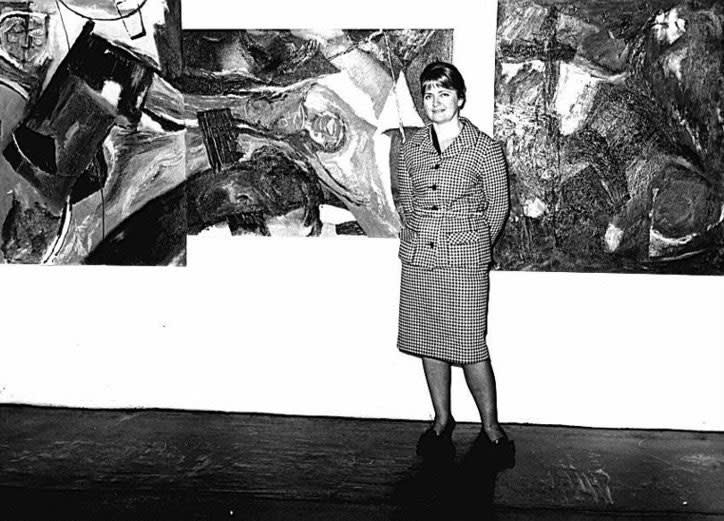Painter Janina Baranowska was born in Grodno, Poland on 28 October 1925. In 1940, following the occupation and division of Poland by the Nazis and Soviet Russia, she was arrested and deported to Russia. In 1942 she joined the so-called 'Anders' Army (comprising the Polish Armed Forces in the Soviet Union and many refugee civilians), and was evacuated in spring 1942, returning to Poland via the Middle East.
Following her arrival in London in 1946, as David Bomberg’s youngest (and she alleged, his favourite) pupil at Borough Polytechnic, she learned that form and composition should underpin all drawing and painting (Bomberg encouraged his students to turn their works upside down to free them from the constraints of reality). From the 1970s, her earlier expressionism gave way to lighter tones in a tighter format, with a strict geometrical grid often providing an underlying compositional framework. She also designed stained glass windows for Polish churches including St Andrew Bobola in Shepherd’s Bush, a centre for the London Polish Catholic community, where General Anders funeral mass was held in May 1970.
Baranowska was a former Board member of the National Society of Painters and Sculptors and the Association of International Arts; Founding Secretary of the Association of Polish Artists in Great Britain (APA) and President (1981-1991); and Director of the POSK Gallery (1965-2007). She held solo exhibitions at the Royal Festival Hall, Drian, Grabowski and Bloomsbury Galleries in London, as well as in her native Poland, France and the USA. Janina Baranowska died in London, England on 1 October 2022. In the UK her work is held in the Ben Uri Collection and in Poland in the National Museum, Warsaw, the Museum of Art, Lodz, and the Archives of Emigration Artists at the University of Torun.


